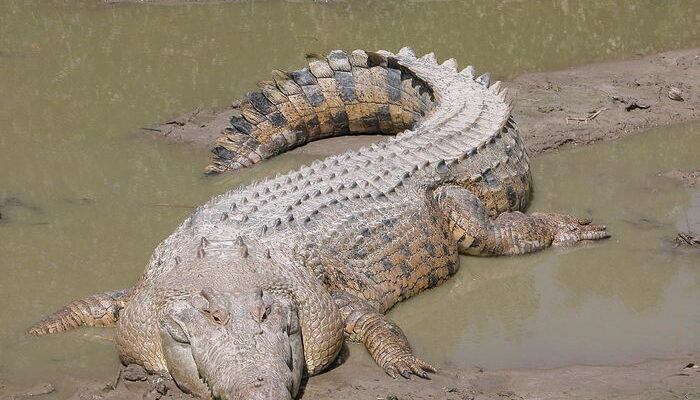Australia, a vast continent characterized by its mesmerizing landscapes, from sun-baked deserts to rugged coastlines, is often dubbed as the land of extremes. But ever wondered why is Australia so wild? It’s a mosaic of evolutionary history, isolated geography, and extreme climate variations. A stark backdrop of contrasting environments has given rise to a unique and diverse array of fauna. While many see this land as a bucket-list travel destination with its pristine beaches and iconic landmarks, there’s a wilder side to it. A side that’s home to an astounding variety of dangerous animals in Australia.
The country’s geographic seclusion meant that much of its wildlife evolved free from external influences. This isolation led to the development of fascinating species, many of which have no counterparts elsewhere. The arid deserts, dense rainforests, and expansive oceans became a canvas for Mother Nature to paint her most imaginative creations. But, with inventiveness, came peril. Hence, the birth of some of the world’s most deadly creatures in Australia. But, fear not! An understanding of these animals and respect for their habitats can offer a safe, yet thrilling experience.
10 – Blue-Ringed Octopus: The Colorful Killer
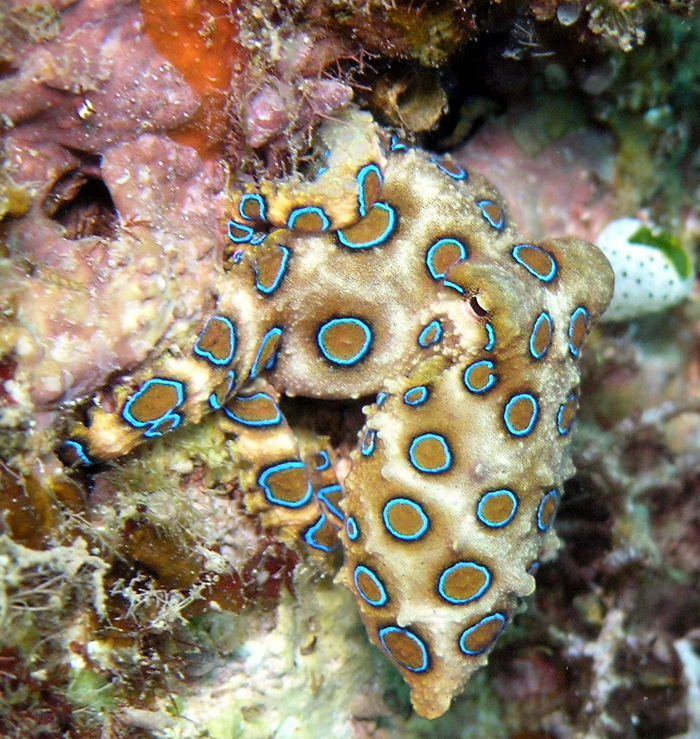
The Blue-ringed octopus (Genus Hapalochlaena) is a captivating creature that beautifully marries art and danger. Found in the tidal regions of the Pacific and Indian Oceans, from Australia to Japan, its brilliant colors can easily draw unsuspecting divers and beachgoers. But, beauty often conceals peril.
This relatively small cephalopod, often fitting into the palm of a hand, possesses venom potent enough to kill 26 humans within minutes. Its venom contains tetrodotoxin, a neurotoxin over a thousand times more toxic than cyanide. There’s no known antidote, making it one of the most deadly creatures in Australia. The octopus generally uses its venom to paralyze its prey but will deliver a painless bite if threatened or stepped on. Within minutes, the affected individual may experience difficulty in breathing, paralysis, and potentially death.
For all its danger, the blue-ringed octopus isn’t inherently aggressive. Respecting its space and being vigilant when exploring tidal pools can keep you safe. Its vibrant blue rings, which become more vivid when it feels threatened, are nature’s way of saying, “Caution ahead!”
09 – Coastal Taipan: Australia’s Serpentine Assassin
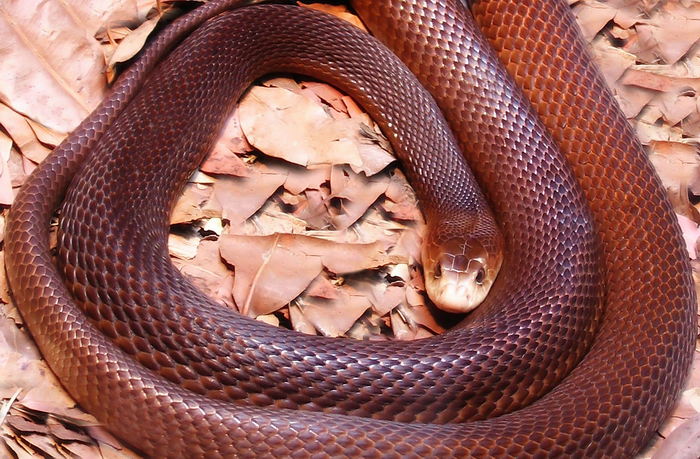
Considered one of the most venomous snakes in the world, the Coastal taipan (Oxyuranus scutellatus) commands respect. This snake, which can grow up to two meters long, is found primarily in the coastal regions of northern and eastern Australia. Its elongated, slender body is perfectly adapted for swift movements, making it an efficient predator.
The venom of the Coastal taipan is a lethal cocktail, predominantly affecting the nervous system and the blood’s clotting agents. A single bite can deliver a large quantity of venom, making immediate medical attention crucial. Though fatalities were common in the past, the development of an antivenom has dramatically reduced the number of deaths.
But, here’s the twist. Despite its reputation, the Coastal taipan is quite reclusive. It prefers to avoid human interaction and will generally flee if given the chance. However, like most wild creatures, it becomes aggressive when cornered or threatened. For those traversing its habitats, it’s essential to tread carefully and give any snake a wide berth.
08 – Sydney Funnel Web Spider: The Dark Watcher of Australian Homes
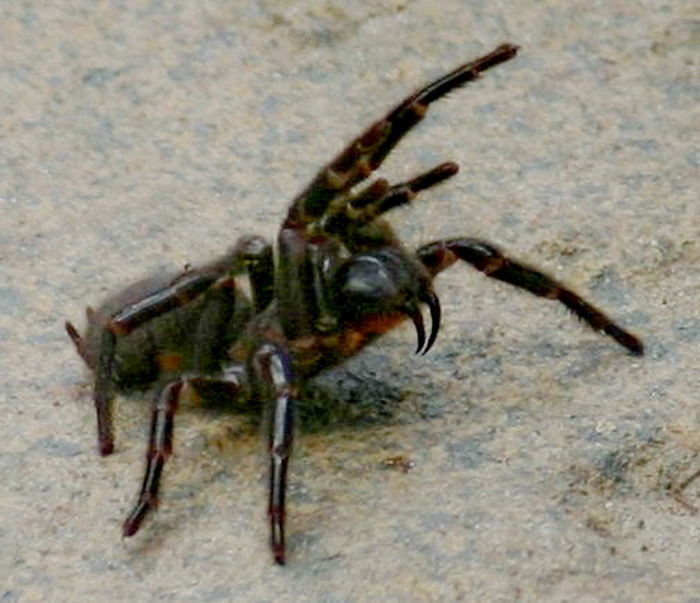
The mere mention of the Sydney funnel web spider (Atrax robustus) is enough to send shivers down many spines. As one of the most venomous spiders globally, this arachnid has garnered a fearful reputation. Found predominantly in the regions surrounding Sydney, these spiders have become one of the iconic dangers of Australia.
The male Sydney funnel web is more venomous than its female counterpart and, unfortunately, is also more likely to wander into human habitats, especially during mating season. Their venom, a complex mix of toxins, can cause severe symptoms, including difficulty in breathing, muscle spasms, and in extreme cases, coma or death. The young, elderly, and those with underlying health conditions are particularly susceptible.
However, much like other deadly Australian creatures, the Sydney funnel web spider isn’t inherently aggressive. It usually bites when it feels threatened or trapped. Since the introduction of antivenom in 1981, no fatalities have been reported, testament to the progress in managing encounters with this notorious arachnid. To stay safe, locals and tourists alike should exercise caution, especially when reaching into dark or concealed areas.
07 – Giant Centipede: The Stealthy Hunter of the Underbrush
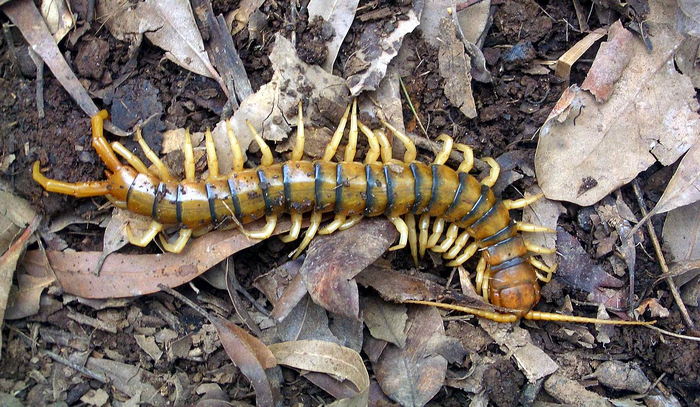
Venturing into the wild terrains of Australia, one might overlook the Giant centipede (Ethmostigmus rubripes). But make no mistake, this is a creature that demands respect. Measuring up to 16 centimeters, this is one of the largest centipedes in the world. Its powerful mandibles, agile movements, and venomous bite make it a formidable predator in the microcosm of the underbrush.
Its venom, a potent mix of proteins and enzymes, is primarily used to subdue its prey. However, when threatened by humans or larger animals, the Giant centipede won’t hesitate to use its bite defensively. While not usually life-threatening to humans, a bite can be extremely painful, often compared to a bee sting but lasting longer, with localized swelling.
Interestingly, these centipedes play a crucial role in the ecosystem, helping control populations of insects and small invertebrates. This natural predator ensures a balance in the ecosystem, preventing overpopulation of certain pests.
06 – Smooth Toadfish: The Deceptive Menace of Shallow Waters
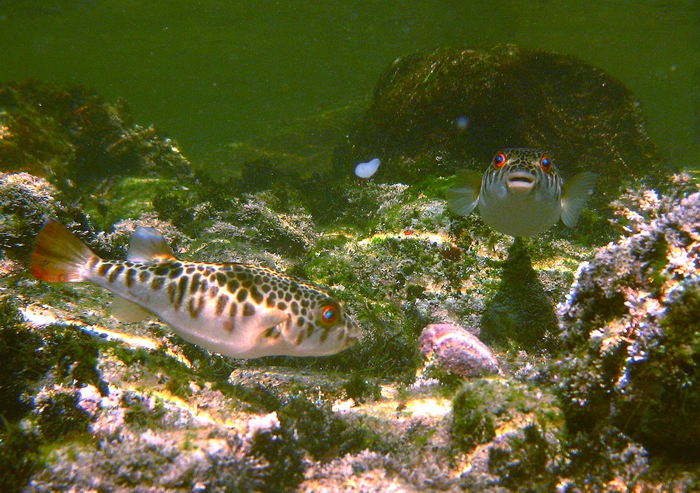
Shallow estuarine waters of Australia hide a subtle menace – the Smooth toadfish (Tetractenos glaber). This benthic fish, with its puffed, rotund appearance, might appear harmless at first. But the reality paints a different picture. The Smooth toadfish is one of the many toxic inhabitants of Australian waters.
Its danger lies not in its bite, but in the tetrodotoxin it harbors. This toxin, found in its tissues, is potent and can be fatal if ingested. Historically, accidental consumption of this fish has led to severe poisoning and, in some cases, death. Symptoms of toadfish poisoning include numbness, tingling, nausea, and in severe cases, paralysis.
For anglers and seafood enthusiasts, the lesson is clear: identification is crucial. While the Smooth toadfish isn’t aggressive, knowing how to recognize it can prevent unfortunate incidents.
05 – Great White Shark: The Legendary Predator of the Deep
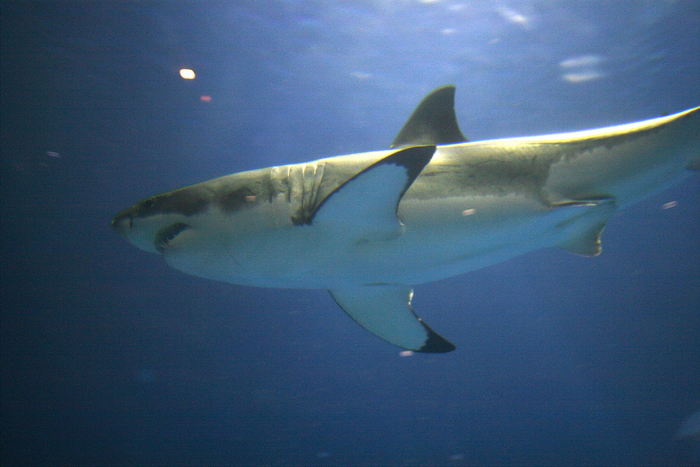
Few creatures capture the imagination and evoke as much awe as the Great white shark (Carcharodon carcharias). As one of the ocean’s apex predators, its sheer size, power, and razor-sharp teeth make it both revered and feared. Roaming the temperate coastal waters around Australia, the Great white has become symbolic of the ocean’s raw power.
Contrary to popular belief, humans aren’t a natural prey for these sharks. Most encounters or attacks on humans are cases of mistaken identity or curiosity. However, the sheer power and size of this shark mean that even an exploratory bite can result in grievous injuries.
For surfers, divers, and ocean enthusiasts, the key is awareness and precaution. Avoiding areas known for shark activity, staying in groups, and refraining from entering the water during dawn or dusk can reduce the risk of encounters. As with all creatures, understanding and respect are essential. After all, the ocean is their domain, and we are merely visitors.
04 – Irukandji: The Tiny Terror of the Tropics
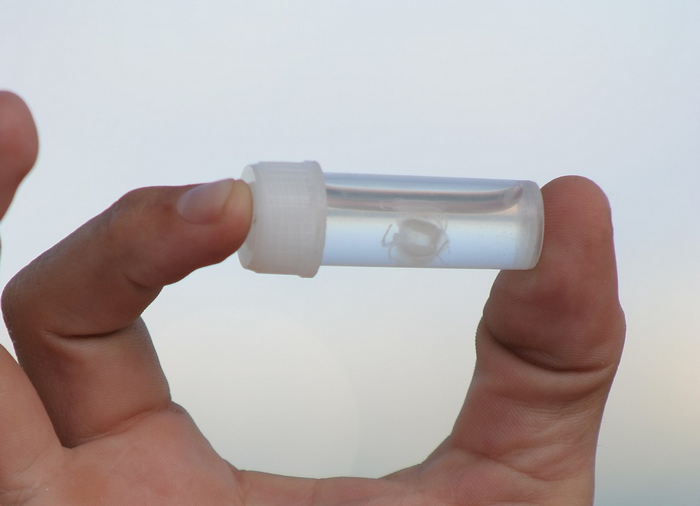
Delving into the vast expanse of Australia’s waters, you’d likely be on the lookout for big predators. However, one of the most dangerous creatures is barely the size of a matchstick head: the Irukandji (Carukia barnesi). This minuscule jellyfish, lurking in the northern marine waters, packs a venomous punch that belies its diminutive size.
Though it’s small, its sting is far from insignificant. Victims describe Irukandji syndrome as a combination of severe pain, nausea, vomiting, and in extreme cases, a feeling of impending doom. Given its transparency and size, the Irukandji remains a hidden peril in Australian waters. While fatalities are rare, the discomfort and potential health implications are significant.
Swimmers and divers are advised to wear protective clothing like stinger suits when in areas where Irukandji are prevalent, especially during the warmer months when these jellyfish are most active.
03 – Redback Spider: The Lethal Lurker in the Shadows
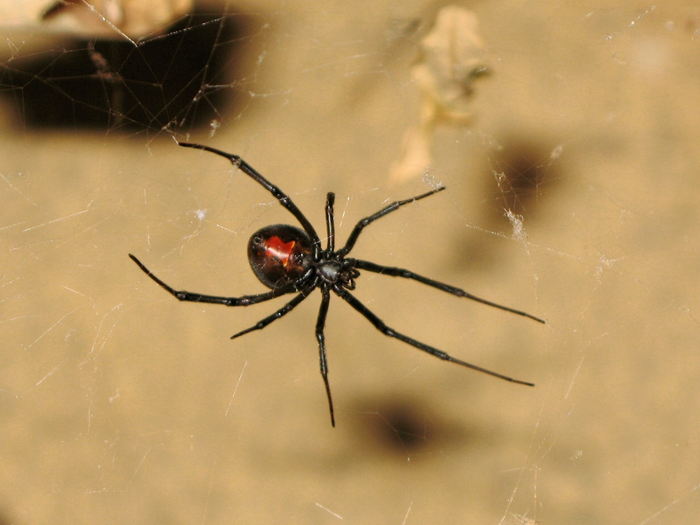
Australia’s iconic Redback spider (Latrodectus hasselti) has gained notoriety worldwide, and rightly so. This relative of the black widow spider is instantly recognizable by the red stripe on its abdomen. Often found in urban areas, hiding in sheltered spots, the Redback’s bite can be severely painful, leading to a condition called latrodectism.
Symptoms post bite can range from localized pain to more severe systemic effects like sweating, nausea, muscle pain, and lethargy. While deaths are extremely rare thanks to antivenom, it’s still important to seek medical attention if bitten.
Interestingly, these spiders also play a role in urban folklore. Their prevalence has embedded them in the Australian cultural narrative, symbolizing the country’s array of unique and dangerous wildlife. Given their tendency to dwell near human habitats, it’s crucial to be cautious when reaching into dark or hidden spots.
02 – Saltwater Crocodile: The Supreme Predator of Aussie Waters
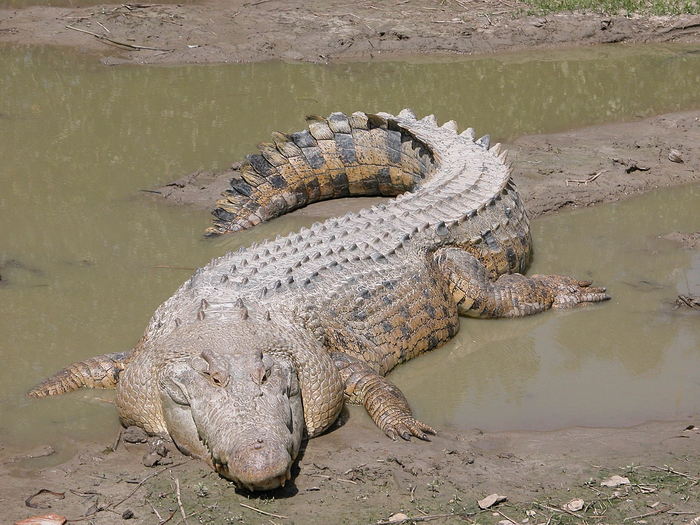
Australia’s northern coasts and estuaries are home to the planet’s largest living reptile: the Saltwater crocodile (Crocodylus porosus). Often called “Salties,” these magnificent creatures have a history that spans millions of years, making them living fossils and apex predators in their habitat.
Growing up to 7 meters long, these crocs have a bite force unparalleled in the animal kingdom. Their diet is vast, from fish to mammals. And while attacks on humans are relatively rare, when they do occur, they’re often fatal. The key to their hunting success is stealth. Lying motionless, partially submerged, they can launch at their prey in a blink, showcasing their raw predatory prowess.
For those exploring northern Australia, it’s of utmost importance to heed local warnings and avoid swimming in areas known for Saltwater crocodile activity. Respecting their territory and understanding their behavior can ensure safe and unforgettable encounters with these ancient behemoths.
01 – Box Jellyfish: Australia’s Transparent Assassin
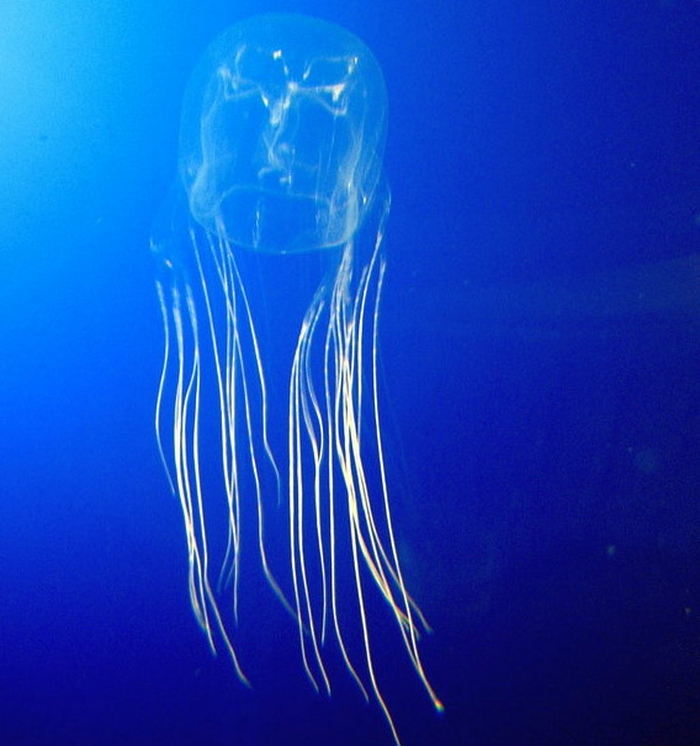
Australia’s tropical waters are a haven for marine biodiversity, teeming with color and life. But amid this underwater paradise floats a nearly invisible and potent danger: the Box jellyfish (Chironex fleckeri). Often termed the world’s most venomous marine creature, a single sting from this gelatinous predator can be excruciatingly painful and even fatal.
The tentacles of the Box jellyfish are lined with cnidocytes, specialized cells that shoot out toxins when touched. Those unfortunate enough to get entangled can suffer from symptoms like immediate skin burning sensation, heart complications, and in severe cases, cardiac arrest. What’s intriguing is the box jellyfish’s almost ethereal appearance — a translucent, bell-shaped body accompanied by delicate tentacles, masking its lethal potential.
During the warmer months, especially between October and May, these jellyfish are known to frequent the waters, making it imperative for swimmers and beachgoers to be vigilant. Protective stinger nets and vinegar stations are often set up on popular beaches, and it’s recommended to carry vinegar as a first aid measure — it can help neutralize the stinging cells.
Understanding and respecting the dangers of the ocean is essential when exploring Australia’s coasts. The Box jellyfish stands as a reminder that beauty and danger often go hand in hand, emphasizing the importance of preparation and awareness during aquatic adventures.
Safety Down Under: Navigating Australia’s Wildlife Wonders
How often have we heard stories about travelers raving about the magnificence of the Great Barrier Reef or the iconic Sydney Opera House? However, one must ask, how safe is Australia for tourists?
Australia, for all its wildlife wonder, is an incredibly popular tourist destination, drawing millions each year. But it’s not just the scenic beauty; it’s the thrill of experiencing the Australian predators in their natural habitat. Safety largely revolves around being informed. Knowing where you’re going, what you might encounter, and how to react can make all the difference.
Most incidents involving wildlife often occur due to human error. Approaching a wild animal, treading into marked territories, or unknowingly stepping on a venomous creature can turn a serene walk into a dangerous ordeal. That said, Australia’s national parks, beaches, and conservation areas are monitored and well-maintained, ensuring the safety of its visitors. It’s about striking a balance between thrill and caution. Tourists must be mindful of warning signs, stick to marked paths, and educate themselves about potential wildlife encounters.
Interestingly, the locals have coexisted with these creatures for years. They’ve mastered the art of living harmoniously with nature, ensuring both humans and animals have their own defined spaces. As a traveler, taking cues from them can be a valuable lesson in navigating the diverse dangers of Australia while soaking in its untouched beauty.
Poisonous Perils and Australian Living
When we think of the deadliest animal in Australia, various contenders come to mind. But the crown might go to a creature that’s often overlooked due to its size – the box jellyfish. Its venom is so potent that it can cause cardiac arrest within minutes. Yet, such deadly organisms represent just a fraction of Australia’s rich biodiversity.
How safe is living in Australia, one might ask? For locals, living amidst these creatures is a norm. They’ve learned to respect boundaries, understand the signs, and take precautions. Urban areas rarely witness dangerous encounters, and as one delves into rural regions, knowledge becomes the primary tool for safety. Remember, most animals attack when threatened. Respecting their space and being vigilant goes a long way in ensuring one’s safety.
While Australia is home to some of the planet’s most venomous species, it’s also a land of unparalleled beauty, brimming with experiences waiting to be explored. Like any other place, it’s about coexistence. The wild and the tame, the dangerous and the docile, together they form the intricate tapestry that is Australia.


